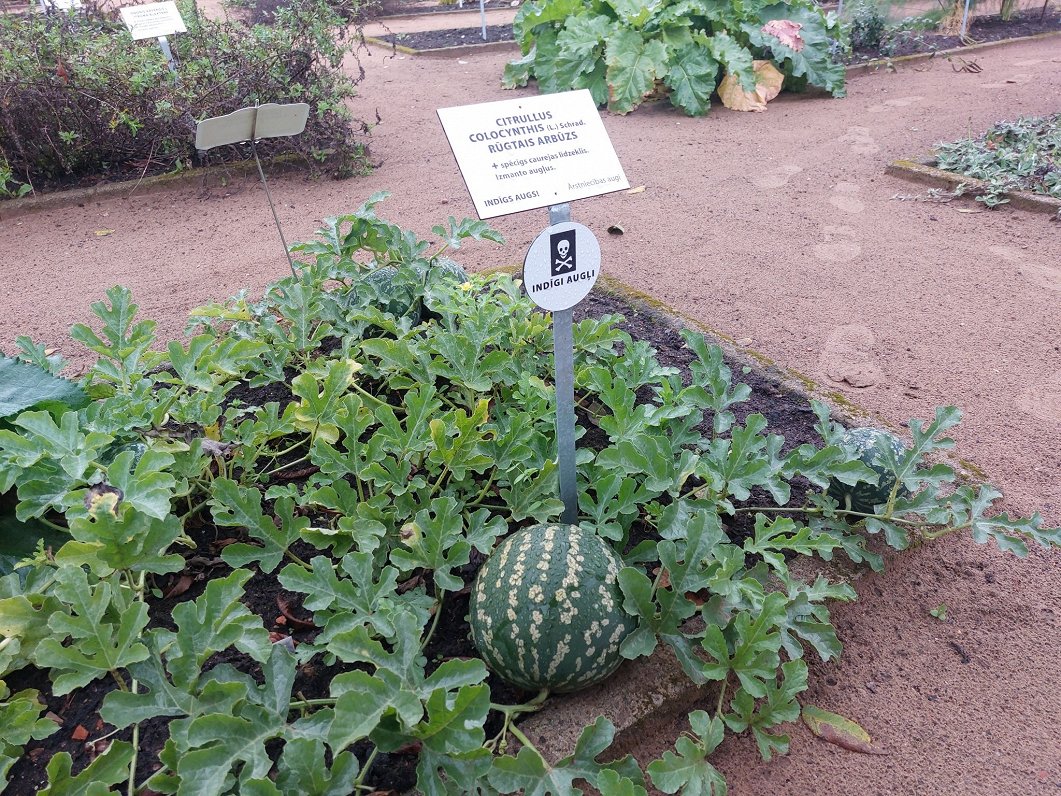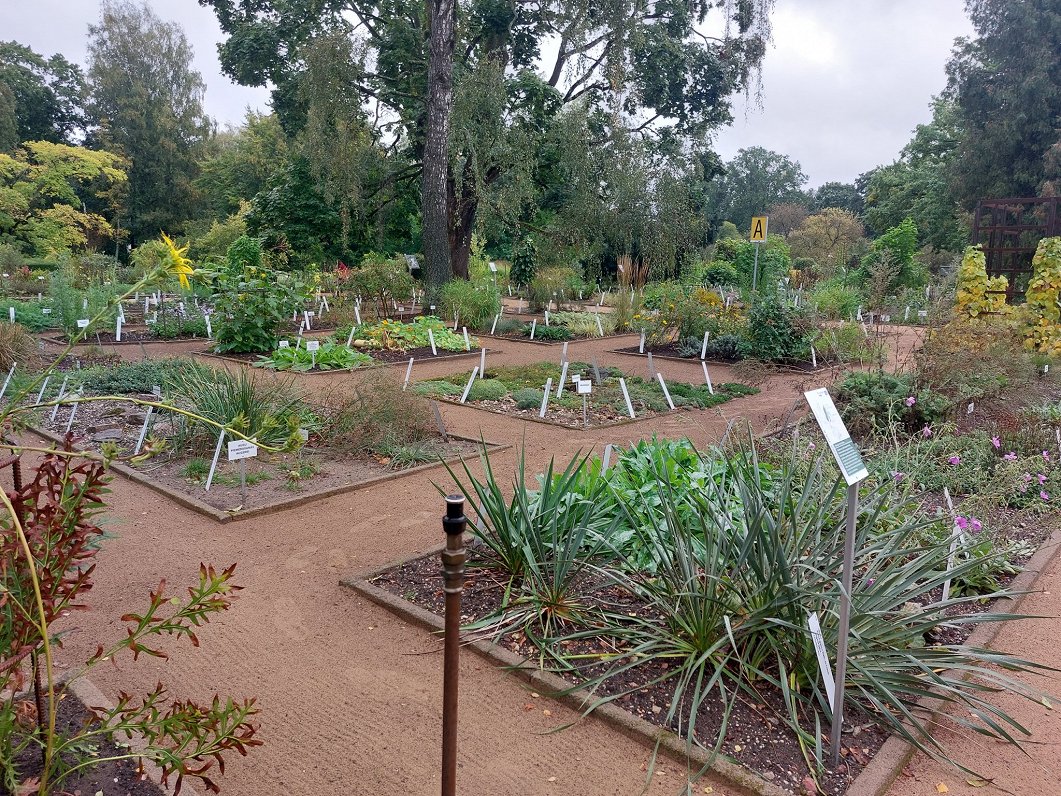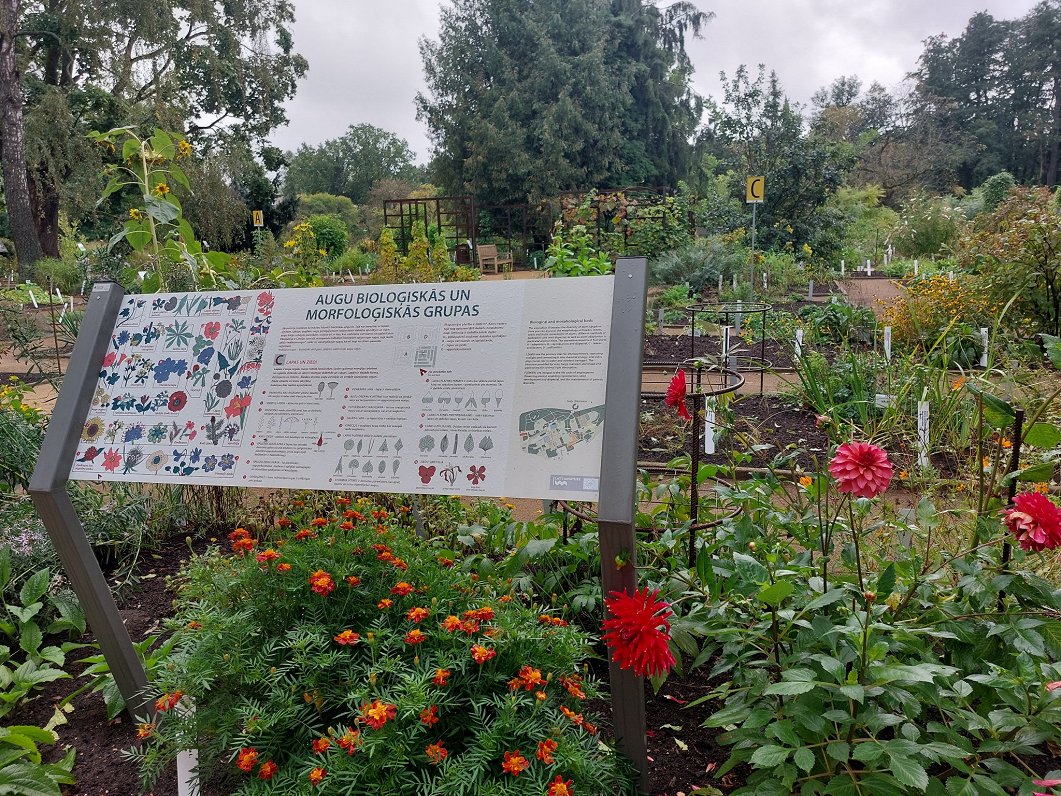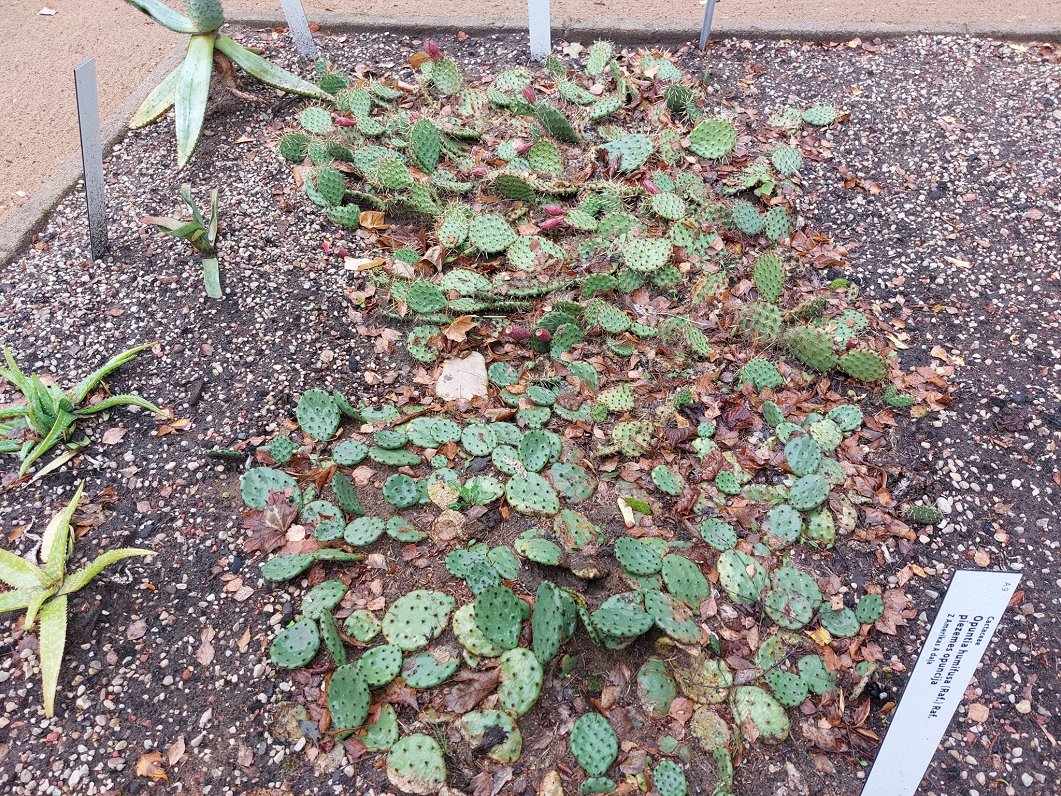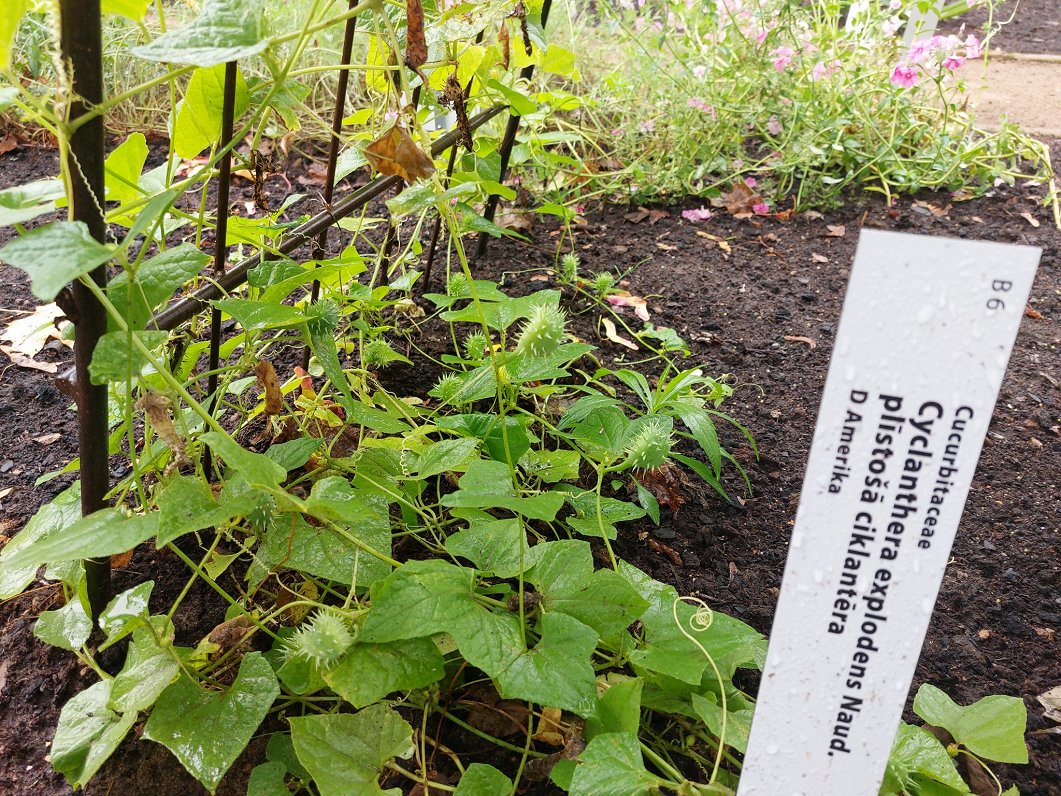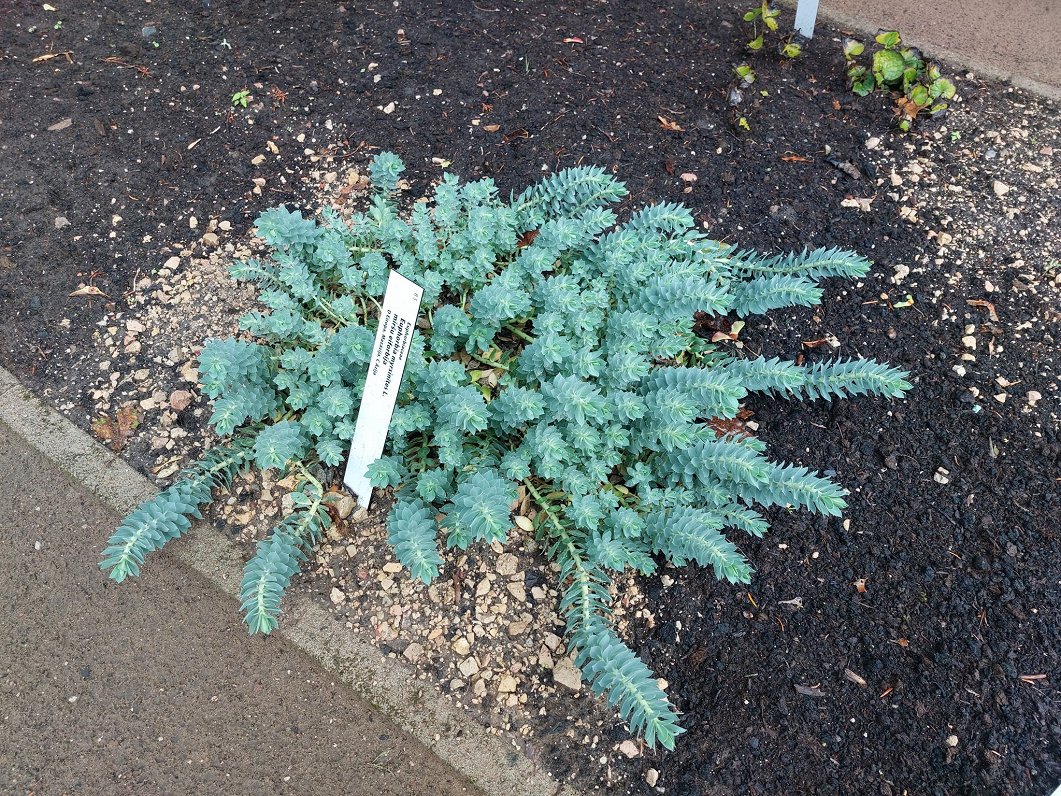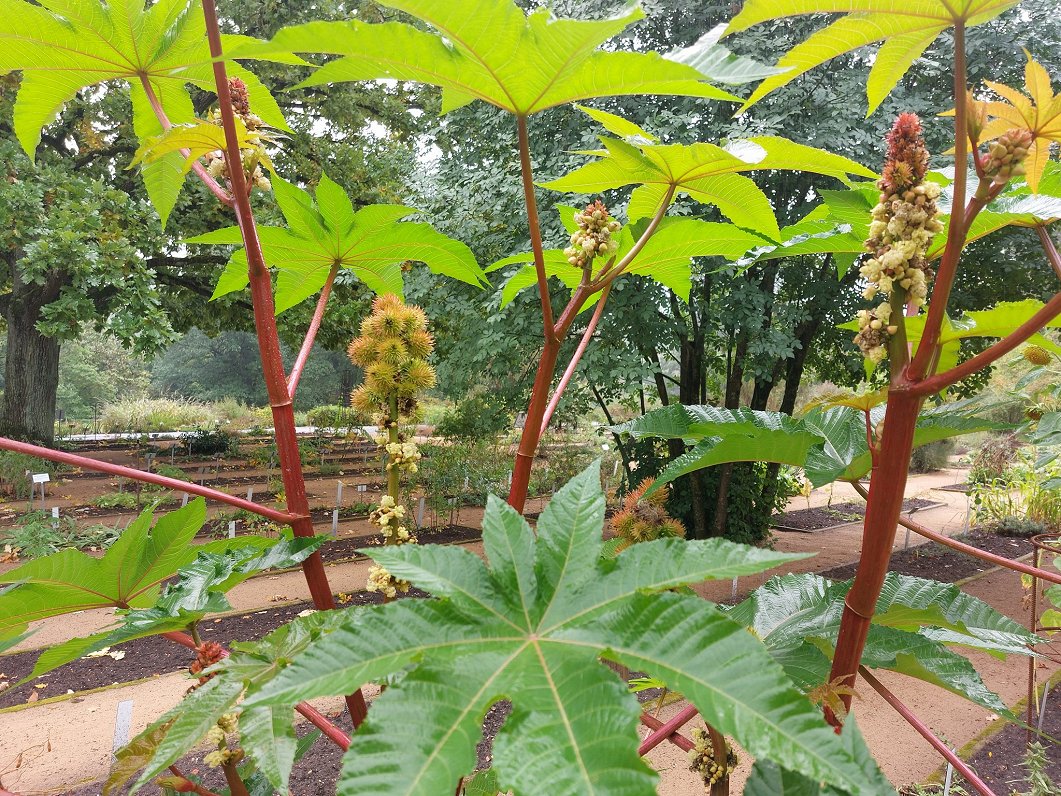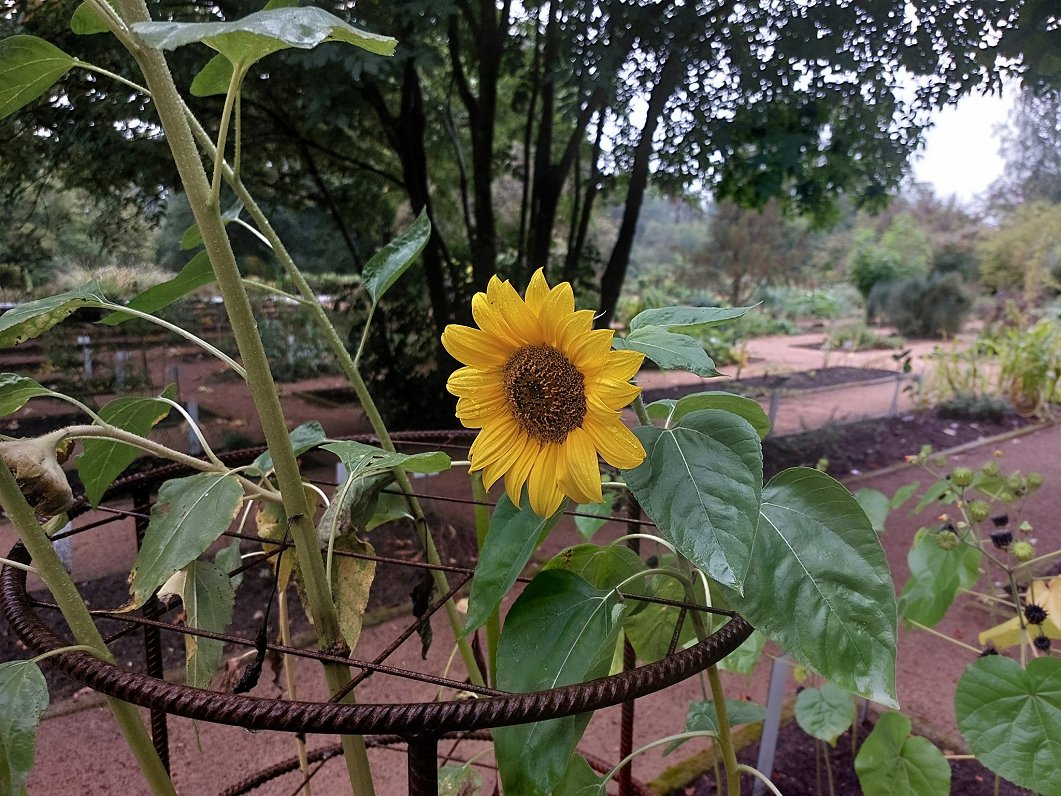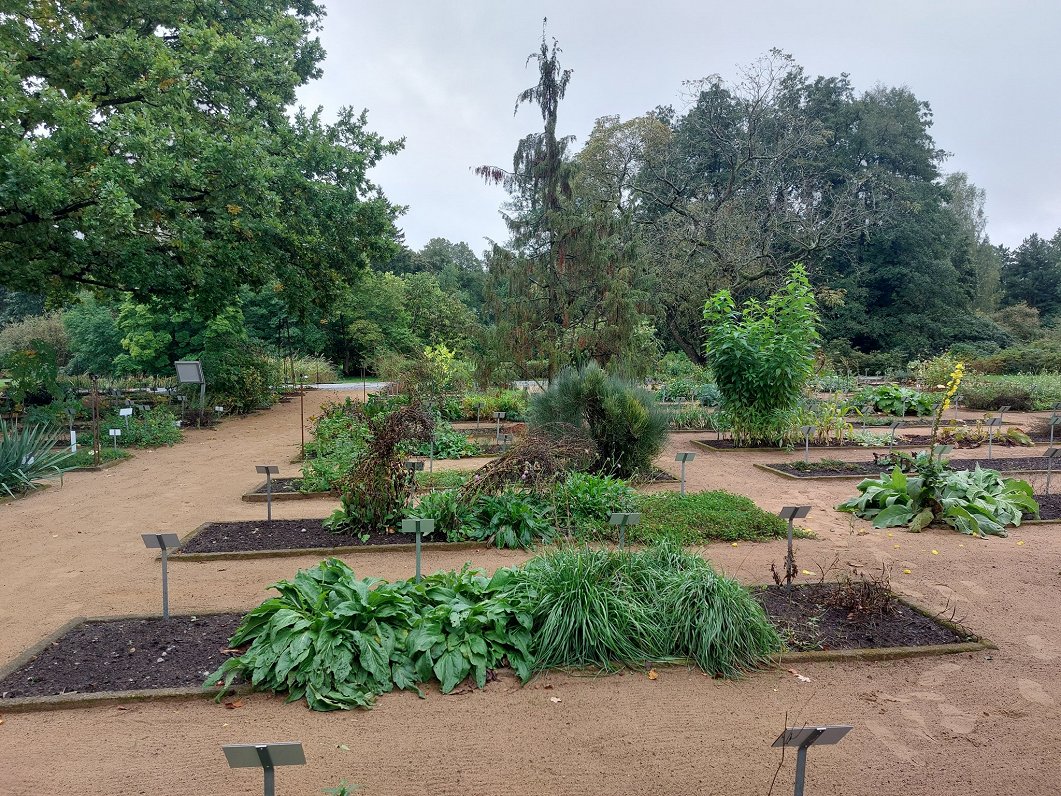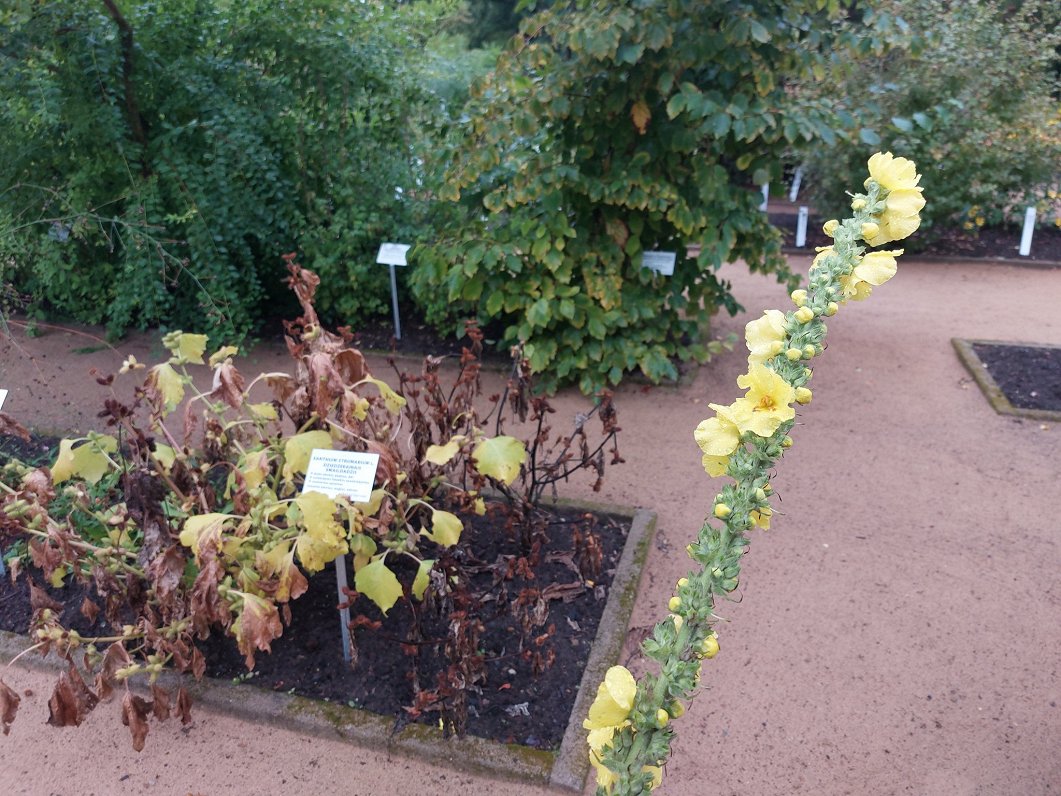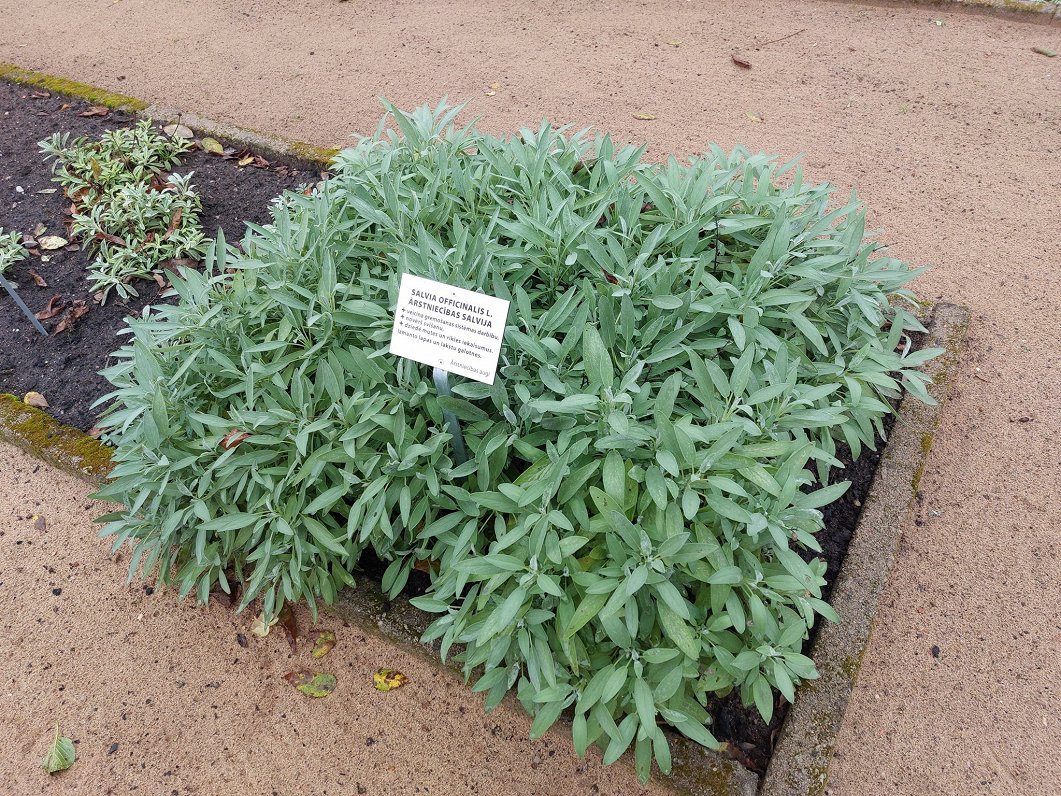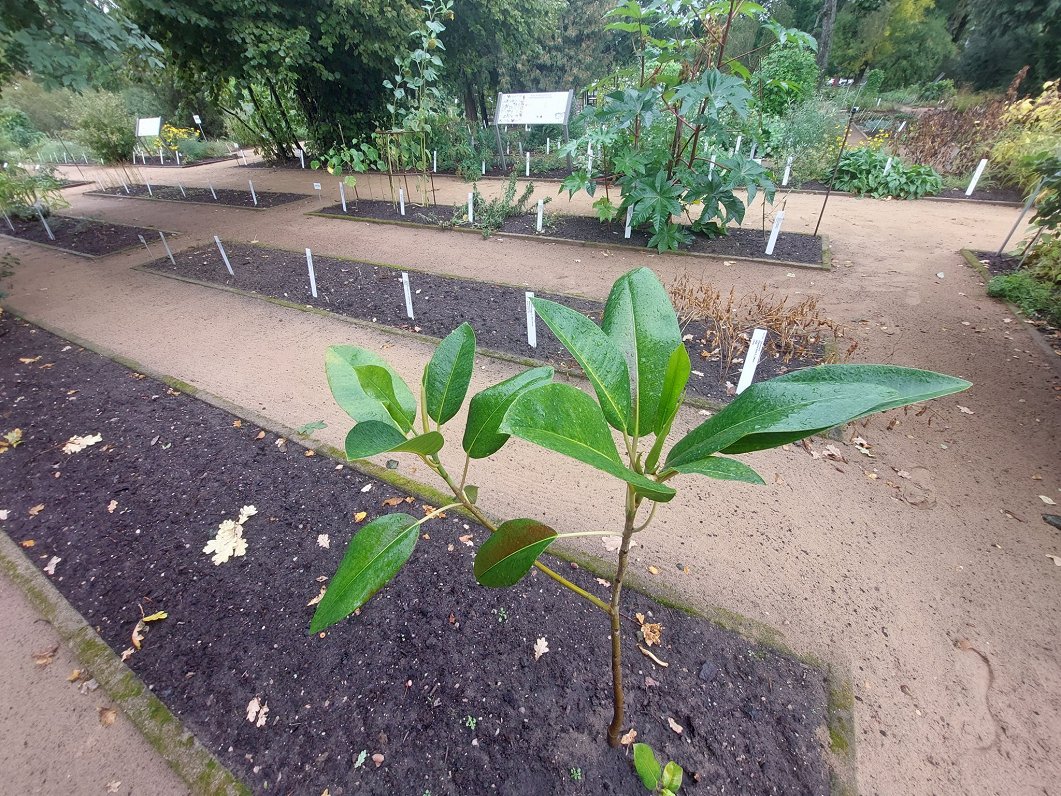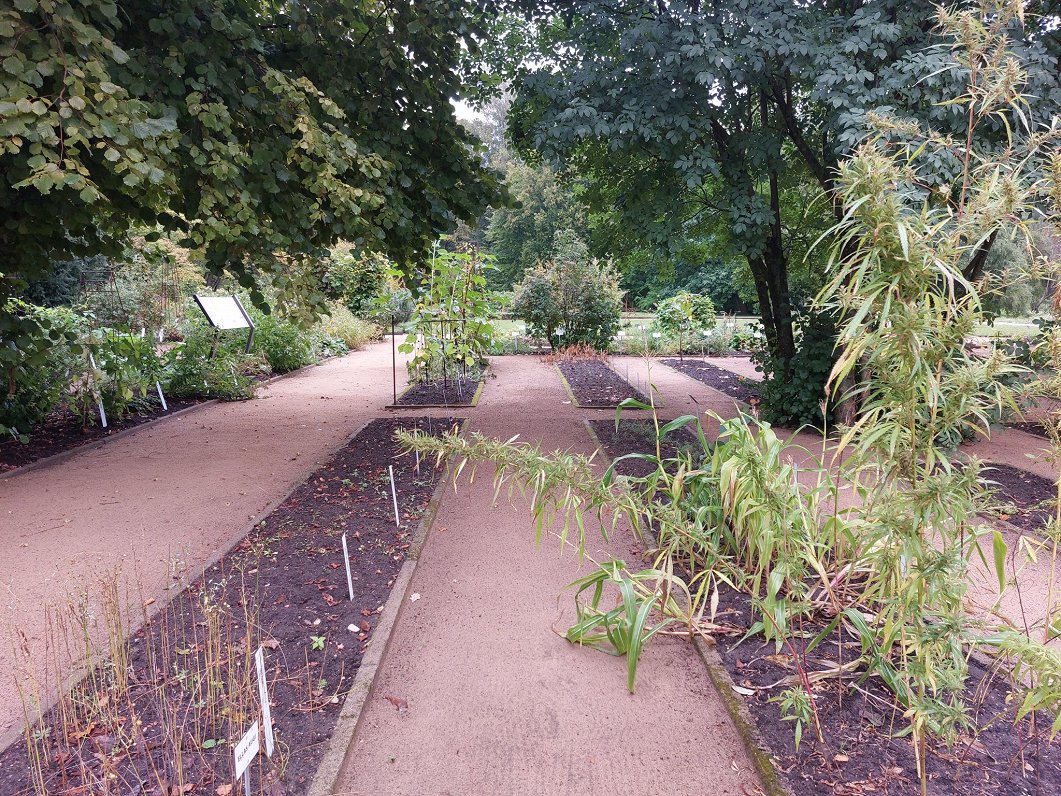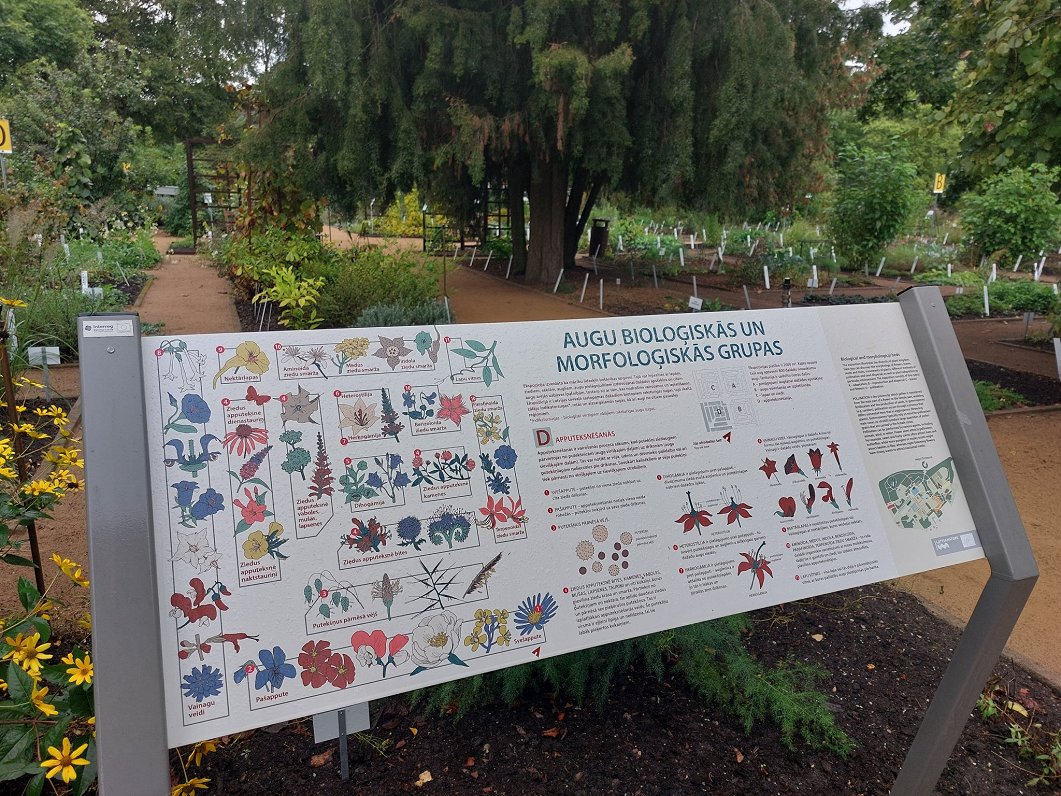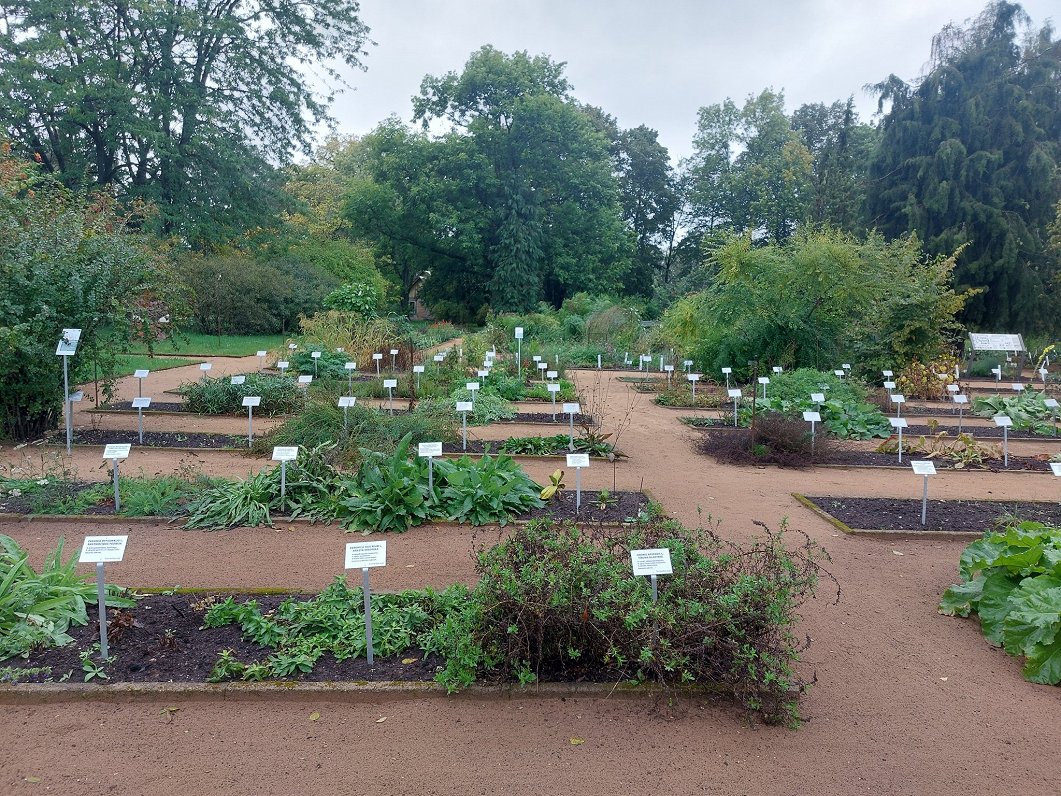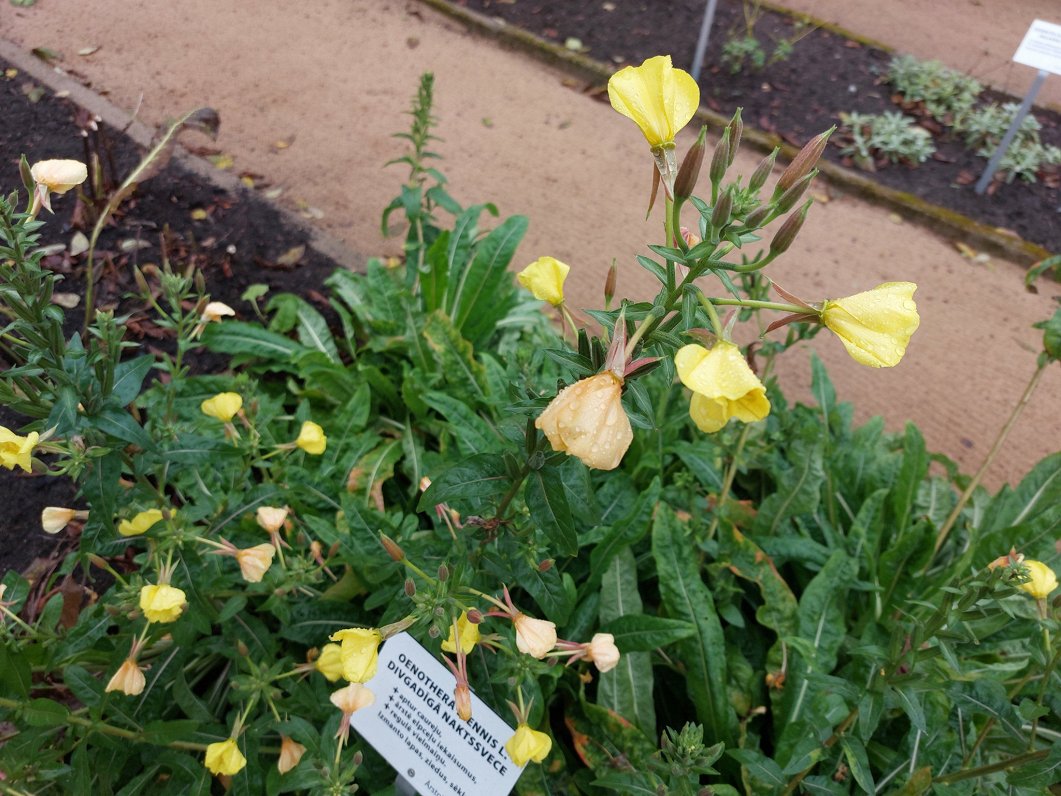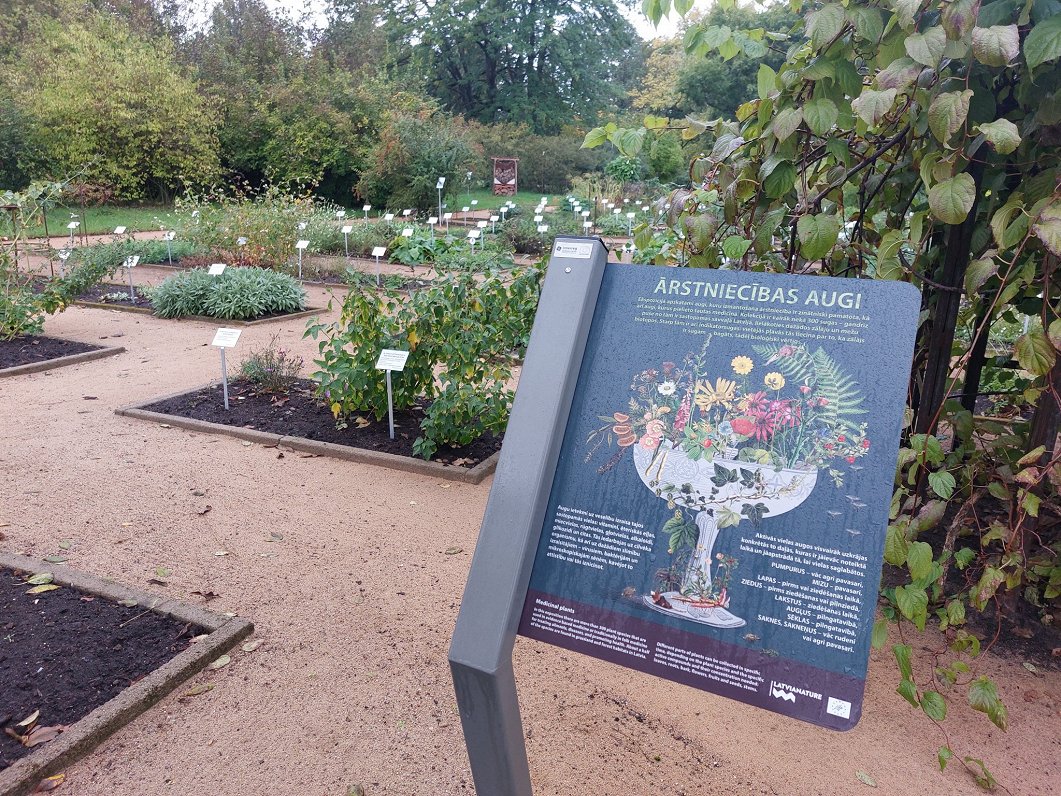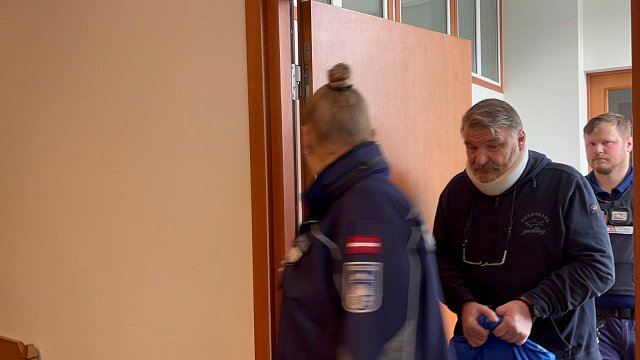Signe Tomsone, Senior Researcher at the Botanical Garden of the University of Latvia, shows the plant displays, which cover a total area of around 4000 square meters and are made up of collections of plants that have been cultivated in the gardens for many years. In total, more than 1,000 plant species are on display. One of the displays highlights the biological and morphological groups of the plants and is like a living botanical book. Here you can see the different fruits and seeds, leaves and flowers, as well as other external physical features that are often linked to the survival of each species in particular conditions.
Another part of the exhibition also contains information on interesting ways of plant dispersal, i.e. how they migrate not only by humans but also by birds or insects.
The researcher pointed out: "For example, here are the myrmecochory plants. Species whose seeds and fruits are distributed directly by ants. The seeds have appendages that contain substances that the ants taste or use to feed their larvae. Of course, it is sticky, sticks to the ants, and scatters somewhere along the way. That's how the seeds spread."
The technical plants on display include plants from which oils, sweeteners, rubber and fiber are extracted. In small beds, you can also study up close how the leaf shapes of trees of different ages differ.
The researcher showed: "This is a bitter watermelon. It's a medicinal plant, but at the same time poisonous. We have also put a sign because the fruit looks exactly like a watermelon, but it is not usable in any way and it is advisable not to try to steal it. With this, I wanted to show that it is better not to take or use anything you do not know in other gardens and in nature..."
The second exhibition is about medicinal plants, which can also be poisonous, like the watermelon.
Each herb is also given a Latin name and a description of what it is used for. Signe Tomsone explained that the exhibition also includes indicator plants that grow in biologically valuable grasslands, of which there are very few in Latvia.
"There are 300 species here, and about half of them are plants that are found in Latvia in the wild and also in various other parts of the world that are not typical of our flora. There are plants used in scientific medicine and folk medicine. But what is interesting is that this exhibition also shows how we can directly benefit from nature and why we need to conserve habitats," said the researcher.
The new exhibitions at the Botanic Garden have been created by upgrading the existing infrastructure, including new paths and a watering system. In addition to the exhibitions created within the framework of the LatViaNature project, entomologist Voldemārs Spuņģis has built an insect house, which will gradually house more and more bees, wasps, silk bees and other invertebrates.
